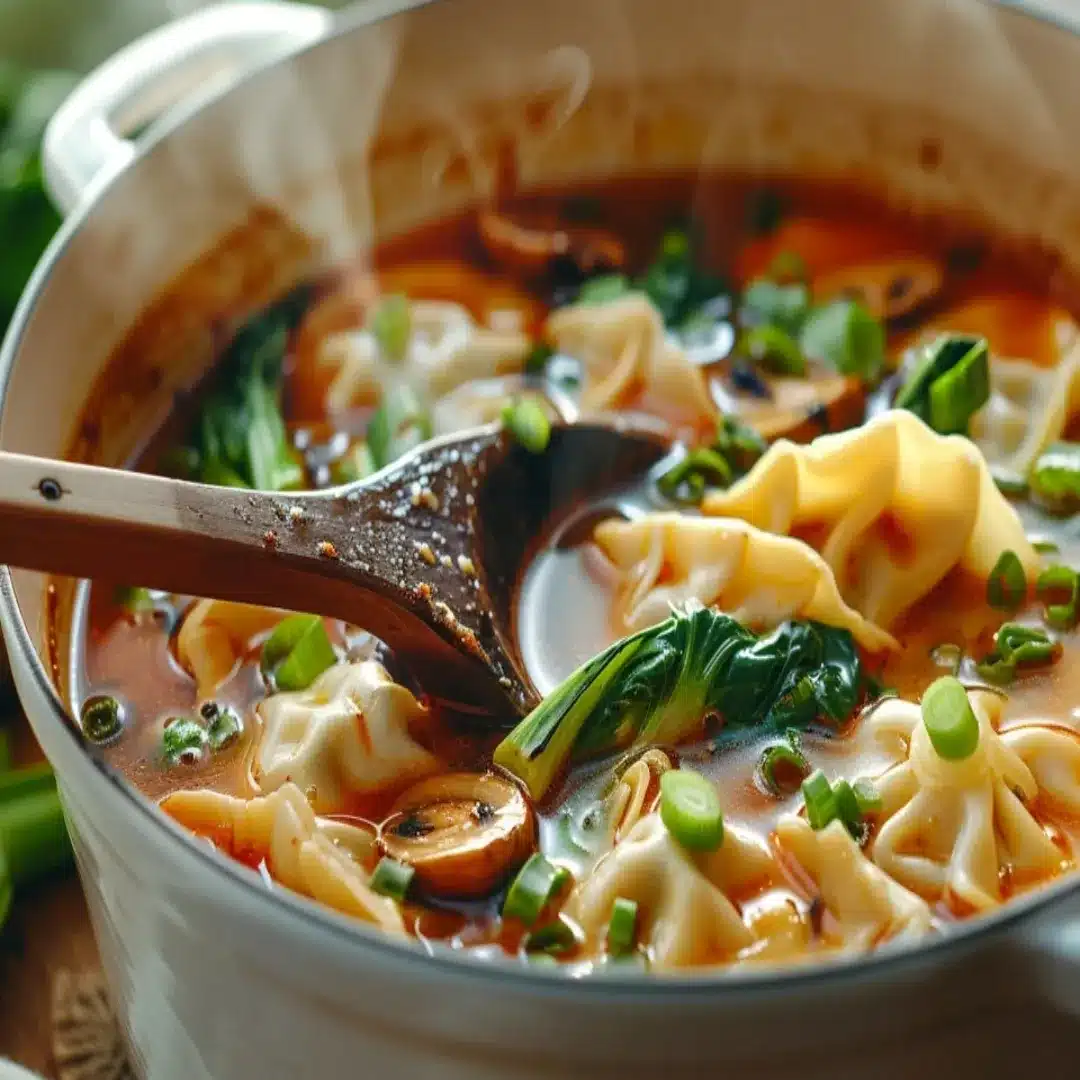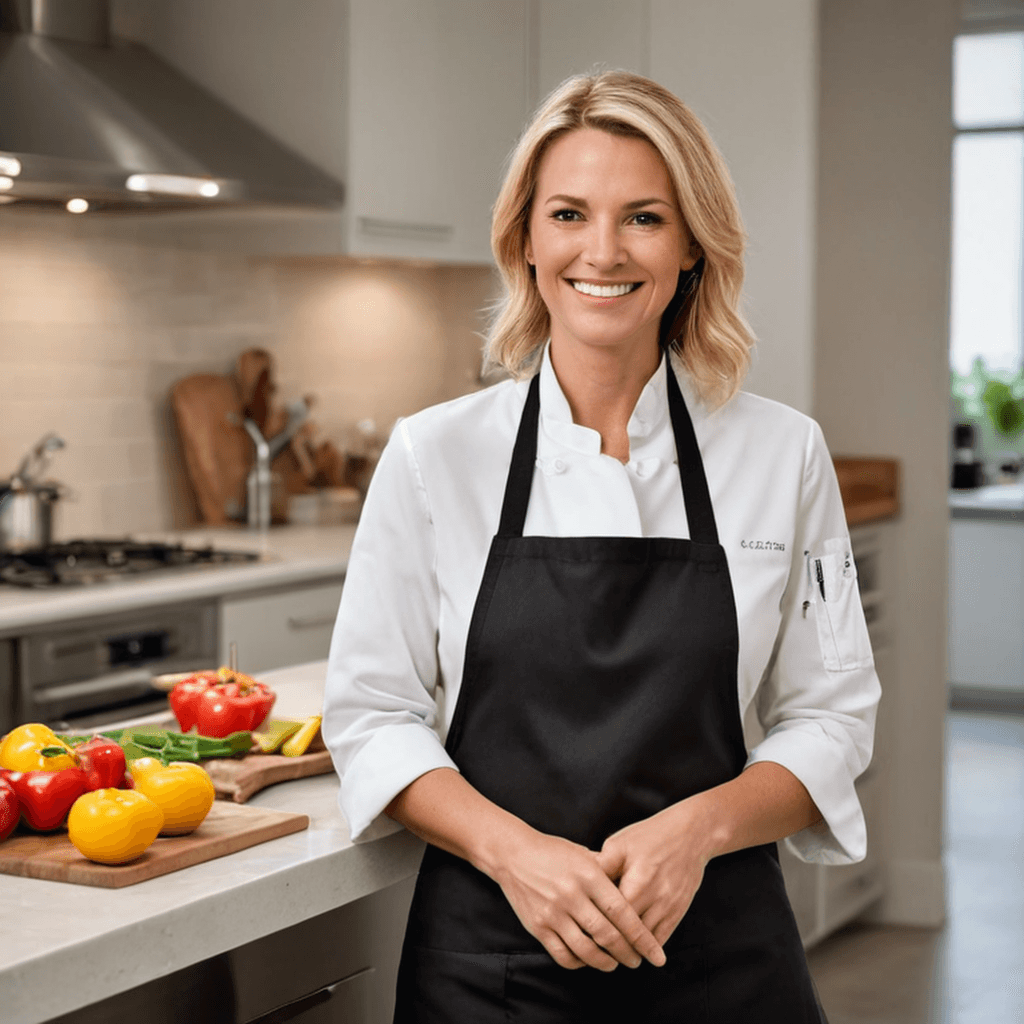Potsticker soup is the kind of dish that warms you from the inside out. Combining tender dumplings with a savory broth and fresh vegetables, this soup is not only filling but also incredibly easy to make. It’s the perfect meal when you crave something quick, hearty, and flavorful. Whether you’re looking for a weeknight dinner or a cozy weekend lunch, potsticker soup delivers the best of comfort food with a twist. In this article, we’ll break down everything you need to know—from the best vegetables to add, flavor pairings, nutritional value, and a step-by-step guide to making your own.
Table of Contents
Table of Contents
What Exactly Is Potsticker Soup?
A Simple Take on a Classic Dumpling Dish
Potsticker soup is essentially a lighter, broth-based version of the traditional fried potstickers you might find at an Asian restaurant. Instead of pan-frying, the dumplings (or potstickers) are simmered in a flavorful broth, which infuses them with added richness while keeping the texture soft and tender. This transformation makes the dish both comforting and nourishing.
Origins and Cultural Influence
The idea of dumpling soups traces back centuries across Asian cuisines. In Chinese cooking, dumplings are often added to hot soups during festive times, symbolizing warmth and prosperity. Potsticker soup is a modern, simplified adaptation of this tradition, giving home cooks a chance to enjoy classic flavors without the hassle of wrapping dumplings from scratch. Most recipes today use frozen potstickers, making it convenient for busy households.
Why It’s Becoming Popular in the USA
Over the past few years, potsticker soup has gained traction in the U.S. as part of the larger trend toward fusion comfort foods. Americans love its versatility: it’s easy to prepare, kid-friendly, and can be customized with a variety of vegetables and garnishes. Plus, with the rise of frozen dumplings in grocery stores, more people are experimenting with this dish at home instead of ordering takeout.
Ingredients for Potsticker Soup
Essential Ingredients You’ll Need
The beauty of potsticker soup is how simple the ingredients list can be while still creating big flavor. Here’s what you’ll need to make a basic version:
- Potstickers (dumplings): Frozen chicken, pork, or vegetable potstickers work perfectly.
- Broth: Chicken or vegetable broth gives a rich and savory base.
- Vegetables: Bok choy, spinach, carrots, mushrooms, and green onions are common picks.
- Seasonings: Soy sauce, sesame oil, garlic, and ginger add depth to the broth.
- Optional garnishes: Cilantro, chili flakes, or a splash of rice vinegar for brightness.
Variations for Different Diets
Potsticker soup is highly adaptable to suit different lifestyles:
- Vegetarian version: Use veggie potstickers and vegetable broth.
- Low-sodium option: Swap in low-sodium soy sauce and broth.
- Spicy twist: Add sriracha, chili oil, or fresh chili peppers to the broth.
- Gluten-free: Choose gluten-free dumplings and tamari instead of soy sauce.
Why Quality Ingredients Matter
Since the recipe is fairly simple, the flavor really depends on using quality broth and well-made dumplings. A rich, slow-simmered broth or high-quality store-bought brand can make the difference between a decent bowl of soup and a deeply satisfying one. The dumplings are the star of the show, so don’t skimp on them—look for brands that use fresh vegetables and lean meats.
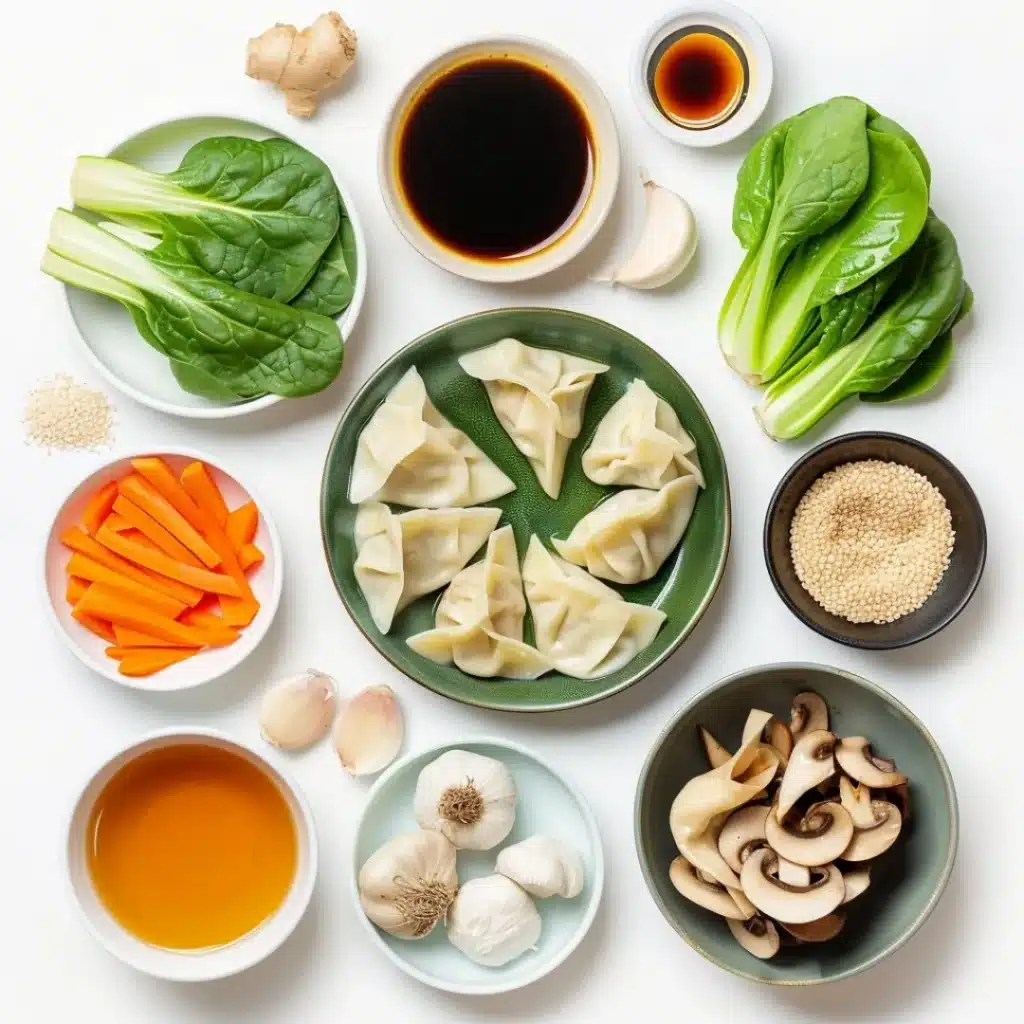
How to Make Potsticker Soup
Step 1: Prepare the Broth
Start by heating a large pot over medium heat. Add a drizzle of sesame oil, then sauté minced garlic and ginger until fragrant. Pour in chicken or vegetable broth and bring it to a gentle simmer. Add a splash of soy sauce for depth and balance.
Step 2: Add Vegetables
Once the broth is simmering, add your choice of vegetables. Bok choy, mushrooms, carrots, or spinach are all excellent options. Let them cook for 5–7 minutes, or until they become tender but still vibrant.
Step 3: Cook the Potstickers
Gently add frozen potstickers into the simmering broth. Stir carefully so they don’t stick together. Let them cook for about 8–10 minutes, or until they float to the surface and are fully heated through.
Step 4: Adjust Seasonings
Taste the soup and adjust seasonings as needed. You can add more soy sauce, a dash of rice vinegar for brightness, or a sprinkle of chili flakes if you like it spicy.
Step 5: Serve and Garnish
Ladle the soup into bowls, making sure each serving gets a good balance of dumplings, broth, and vegetables. Top with sliced green onions, cilantro, or sesame seeds. Serve hot and enjoy immediately.
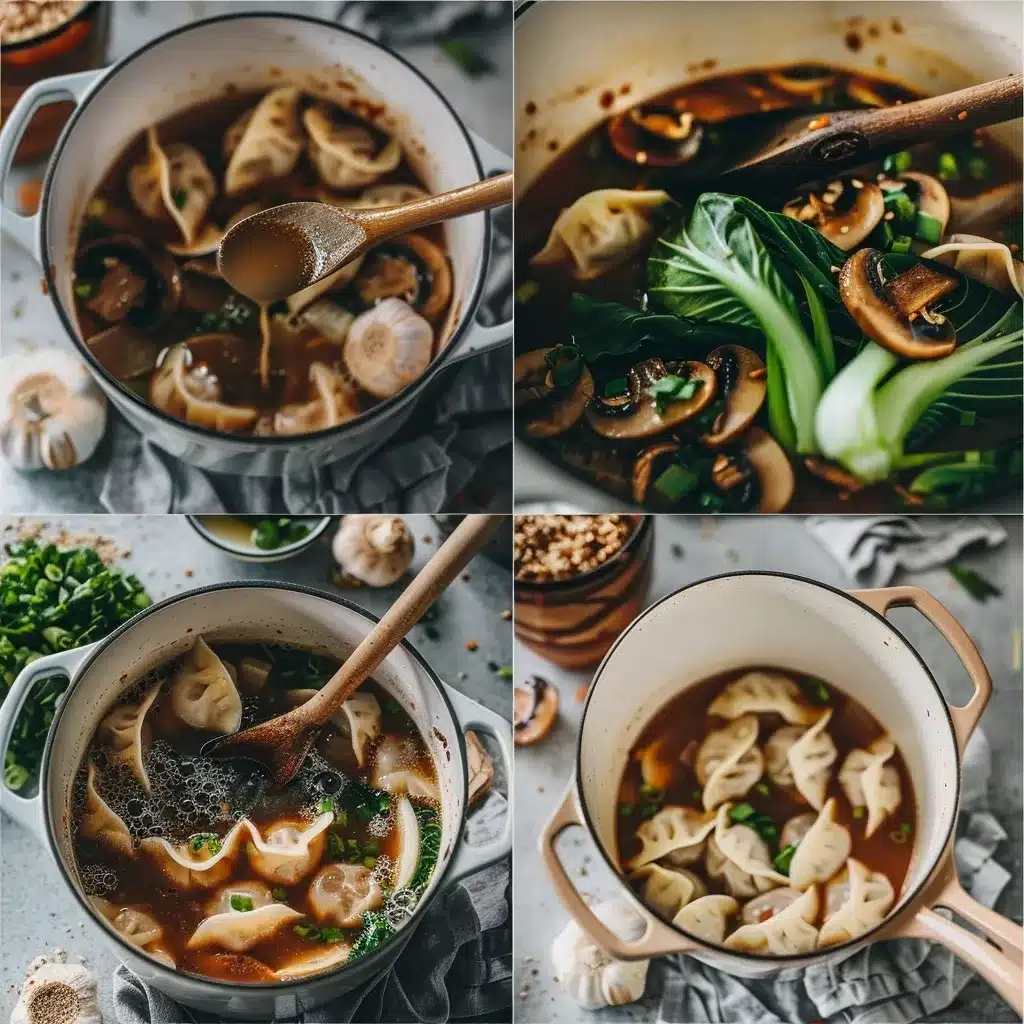
Best Vegetables to Put in Potsticker Soup
Leafy Greens for Extra Freshness
Leafy greens bring both nutrition and a refreshing taste to potsticker soup. Popular choices include:
- Bok choy: Mild, crisp, and slightly sweet, it pairs perfectly with dumplings.
- Spinach: Quick-cooking and nutrient-dense, spinach adds a vibrant green color.
- Kale: For a heartier bite, kale gives a chewy texture and earthy taste.
Crunchy Vegetables for Texture
Adding vegetables with a bit of crunch gives the soup more variety:
- Carrots: Their sweetness balances the savory broth.
- Snow peas or snap peas: These bring a light crunch and fresh flavor.
- Celery: Adds subtle flavor and keeps its crispness even in hot broth.
Flavor-Boosting Options
Some vegetables add a deeper richness to the soup:
- Mushrooms (shiitake or button): They soak up the broth and enhance umami flavors.
- Green onions: A classic garnish that also infuses the broth with mild onion flavor.
- Corn kernels: For a touch of sweetness, corn makes the soup feel even heartier.
Seasonal Flexibility
One of the best things about potsticker soup is its adaptability. You can swap vegetables depending on the season. In winter, root veggies like turnips or parsnips work well. In summer, zucchini or bell peppers bring a lighter, fresher vibe.
What Goes Well with Potsticker Soup
Light Side Dishes for Balance
Since potsticker soup is already hearty, pairing it with light sides keeps the meal balanced:
- Asian cucumber salad: Refreshing, tangy, and perfect for cleansing the palate.
- Steamed edamame: Protein-packed and lightly salted for a simple complement.
- Pickled vegetables: Add a tangy crunch to contrast the rich broth.
Carbs to Make It More Filling
If you want to turn potsticker soup into a complete meal, pairing it with carbs works beautifully:
- Steamed rice: Absorbs the broth and makes the meal more satisfying.
- Fried rice: Adds extra texture and flavor alongside the soup.
- Noodles: A small serving of rice noodles or soba can be enjoyed on the side.
Drinks That Pair Well
Beverages can enhance the dining experience:
- Green tea: Its earthy notes balance the savory flavors.
- Jasmine tea: Floral and aromatic, it pairs well with dumplings.
Desserts to Finish the Meal
A sweet ending completes the comfort food experience:
Green tea ice cream: A refreshing finish after a warm so
Mango sticky rice: Creamy and tropical.
Sesame balls (Jian Dui): Crispy on the outside, chewy on the inside.
Nutritional Value & Calories in Potsticker Soup
Average Calorie Count
On average, one serving of potsticker soup (about 2 cups with dumplings and vegetables) contains 250–350 calories. The calorie count depends on the type of potstickers, broth, and additional ingredients you use. For example, pork dumplings tend to be higher in calories compared to veggie dumplings.
Macronutrient Breakdown
A typical serving provides a good balance of macronutrients:
- Protein: 10–15 grams from dumplings and broth.
- Carbohydrates: 25–35 grams from dumpling wrappers and vegetables.
- Fat: 8–12 grams, mainly from sesame oil and dumpling filling.
Vitamins and Minerals
Because it’s packed with vegetables, potsticker soup can be a source of:
- Vitamin A: From carrots and leafy greens.
- Vitamin C: From bok choy, spinach, and bell peppers.
- Iron & folate: From leafy greens like kale or spinach.
- Calcium: From fortified broth or added tofu.
How to Make It Healthier
Reduce sodium by opting for low-salt soy sauce and broth.
Use vegetable-based broth for a lighter version.
Choose lean protein dumplings (chicken, shrimp, or veggie).
Add extra vegetables to increase fiber and lower calorie density.
Tips for Customizing Potsticker Soup
Choose Your Favorite Dumplings
The dumplings are the star of the dish, and you can easily swap them based on preference:
- Pork dumplings: Rich and savory, great for traditional flavor lovers.
- Chicken dumplings: Leaner and lighter, perfect for a healthier bowl.
- Vegetable dumplings: Ideal for vegetarians and those who want more fiber.
- Shrimp dumplings: A seafood twist that pairs well with light broths.
Adjust the Spice Level
Spice lovers can make the soup fiery by adding chili oil, sriracha, or fresh chili peppers. If you prefer mild flavors, stick with ginger and garlic for a cozy, aromatic kick without too much heat.
Experiment with Broths
The broth sets the stage for the entire dish, so don’t be afraid to experiment:
- Chicken broth: Classic and rich.
- Vegetable broth: Light and plant-based.
- Miso broth: Adds a nutty, umami-packed depth.
- Bone broth: Extra protein and a hearty feel.
Add Protein Boosts
If you want to make the soup more filling, you can add extra proteins:
- Cubes of tofu for a plant-based boost.
- Shredded chicken or turkey.
- Soft-boiled eggs for a ramen-inspired twist.
Garnish Creatively
Don’t underestimate the power of garnishes. Fresh herbs, toasted sesame seeds, or a drizzle of sesame oil can elevate the dish from simple comfort food to a restaurant-worthy bowl.
Common Mistakes to Avoid When Making Potsticker Soup
Overcooking the Dumplings
One of the most common mistakes is leaving the potstickers in the broth for too long. This makes them fall apart and lose their chewy texture. Cook them just until they float and are heated through.
Using Weak or Bland Broth
Since broth is the backbone of this dish, using a weak or watery broth will result in a disappointing flavor. Always use a rich chicken, vegetable, or bone broth for the best results.
Adding All Vegetables at Once
Different vegetables cook at different speeds. If you toss everything in together, some veggies may turn mushy while others stay raw. Add firm vegetables (like carrots) first, and delicate greens (like spinach) last.
Overseasoning with Soy Sauce
Soy sauce adds depth, but too much can make the soup overwhelmingly salty. Always start with a small amount and adjust gradually.
Skipping Garnishes
A garnish might seem optional, but skipping fresh herbs, scallions, or a drizzle of sesame oil can make the dish feel incomplete. Garnishes are what transform a simple soup into a flavorful, well-rounded meal.
Serving Ideas & Storage Tips for Potsticker Soup
Creative Serving Ideas
Potsticker soup can be served in many ways to make it more inviting:
- Family-style: Place a large pot in the middle of the table and let everyone serve themselves.
- Individual bowls: Add dumplings and vegetables first, then pour hot broth on top for a restaurant-style presentation.
- Toppings bar: Offer garnishes like sliced scallions, chili oil, sesame seeds, and cilantro so guests can customize their bowls.
Storing Leftovers
If you have leftovers, store them properly to keep them fresh:
- Refrigerator: Store the soup in an airtight container for up to 3 days.
- Freezer: Freeze the broth and vegetables separately from the dumplings to prevent them from getting mushy.
Reheating Tips
- On the stove: Simmer gently over medium heat until warmed through.
- In the microwave: Heat in short intervals, stirring occasionally to prevent uneven heating.
- For best texture: Add fresh dumplings when reheating instead of storing them in the broth.
Making Ahead for Meal Prep
Potsticker soup is great for meal prep. You can prepare the broth and chop vegetables in advance, then cook the dumplings fresh before serving. This ensures the best flavor and texture.
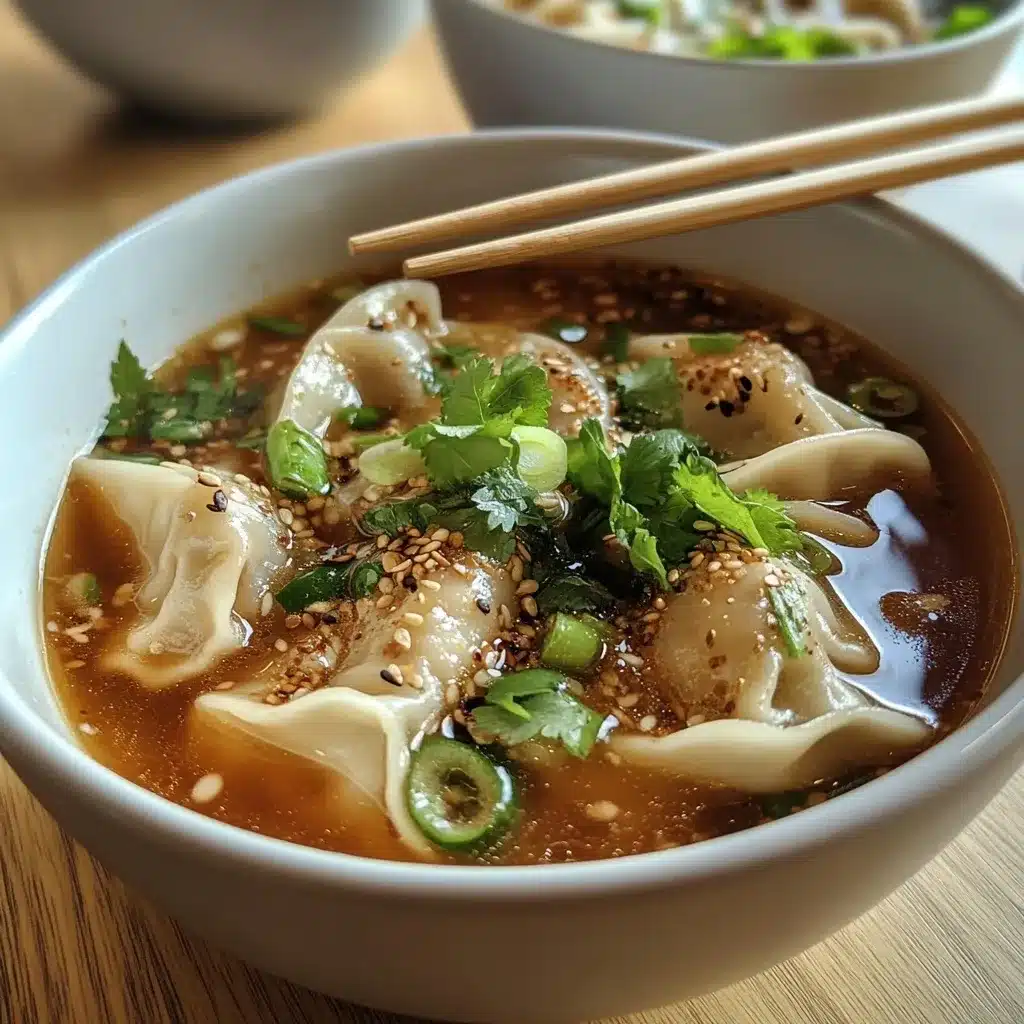
FAQs
What exactly is potsticker soup?
Potsticker soup is a comforting dish made with dumplings (potstickers) simmered in a flavorful broth with vegetables and seasonings. Unlike pan-fried potstickers, the dumplings in this soup are boiled, giving them a soft texture that blends perfectly with the savory broth.
What goes well with potsticker soup?
Light side dishes such as cucumber salad, steamed edamame, or pickled vegetables pair beautifully with potsticker soup. For a fuller meal, you can serve it with rice, fried rice, or noodles. Green tea or jasmine tea are excellent drink pairings.
What veggies to put in potsticker soup?
Common vegetables include bok choy, spinach, carrots, mushrooms, green onions, and snap peas. The great thing about potsticker soup is its flexibility—you can use seasonal vegetables or whatever you have on hand.
How many calories are in potsticker soup?
On average, one serving of potsticker soup (about 2 cups) contains between 250–350 calories. The exact amount depends on the type of dumplings, broth, and vegetables used.
Conclusion
Potsticker soup is more than just a meal—it’s a bowl of comfort that blends simplicity, flavor, and nutrition. With tender dumplings, fresh vegetables, and a rich broth, it’s the kind of dish that satisfies cravings while remaining flexible enough to suit different diets and preferences. From weekday dinners to cozy weekend gatherings, this soup is a versatile recipe that belongs in every kitchen
Print
Potsticker Soup: The Ultimate Comfort Food for Every Season
- Total Time: 30 minutes
- Yield: 4 servings 1x
Description
This Potsticker Soup is the ultimate comfort food — tender dumplings simmered in a flavorful broth with fresh vegetables and seasonings. Ready in just 30 minutes, it’s cozy, quick, and nourishing.
Ingredients
12 frozen potstickers (chicken, pork, veggie, or shrimp)
6 cups chicken or vegetable broth
2 cups mixed vegetables (bok choy, carrots, mushrooms, spinach)
2 cloves garlic, minced
1 tablespoon fresh ginger, grated
2 tablespoons soy sauce (low sodium preferred)
1 teaspoon sesame oil
Optional toppings: scallions, cilantro, sesame seeds, chili oil
Instructions
1. Heat sesame oil in a large pot over medium heat. Add garlic and ginger, sauté until fragrant (about 1–2 minutes).
2. Pour in broth and soy sauce, then bring to a gentle simmer.
3. Add vegetables (except leafy greens) and cook for 5–7 minutes until tender.
4. Stir in frozen potstickers and cook for 8–10 minutes, until they float and are fully heated.
5. Add leafy greens such as spinach or bok choy, simmer for 1–2 minutes.
6. Taste and adjust seasonings with soy sauce, chili flakes, or rice vinegar.
7. Serve hot, topped with scallions, cilantro, and sesame seeds.
Notes
– For a vegetarian version, use veggie dumplings and vegetable broth.
– For extra protein, add tofu cubes or shredded chicken.
– To make ahead, prepare the broth and veggies, then cook dumplings fresh before serving.
- Prep Time: 10 minutes
- Cook Time: 20 minutes
- Category: Soup
- Method: Stovetop
- Cuisine: Asian Fusion
Nutrition
- Serving Size: 1 bowl (about 2 cups)
- Calories: 300 kcal
- Sugar: 3 g
- Sodium: 700 mg
- Fat: 10 g
- Saturated Fat: 2 g
- Unsaturated Fat: 7 g
- Carbohydrates: 32 g
- Fiber: 4 g
- Protein: 12 g
- Cholesterol: 25 mg
Keywords: Potsticker Soup, Dumpling Soup, Asian Soup Recipe

